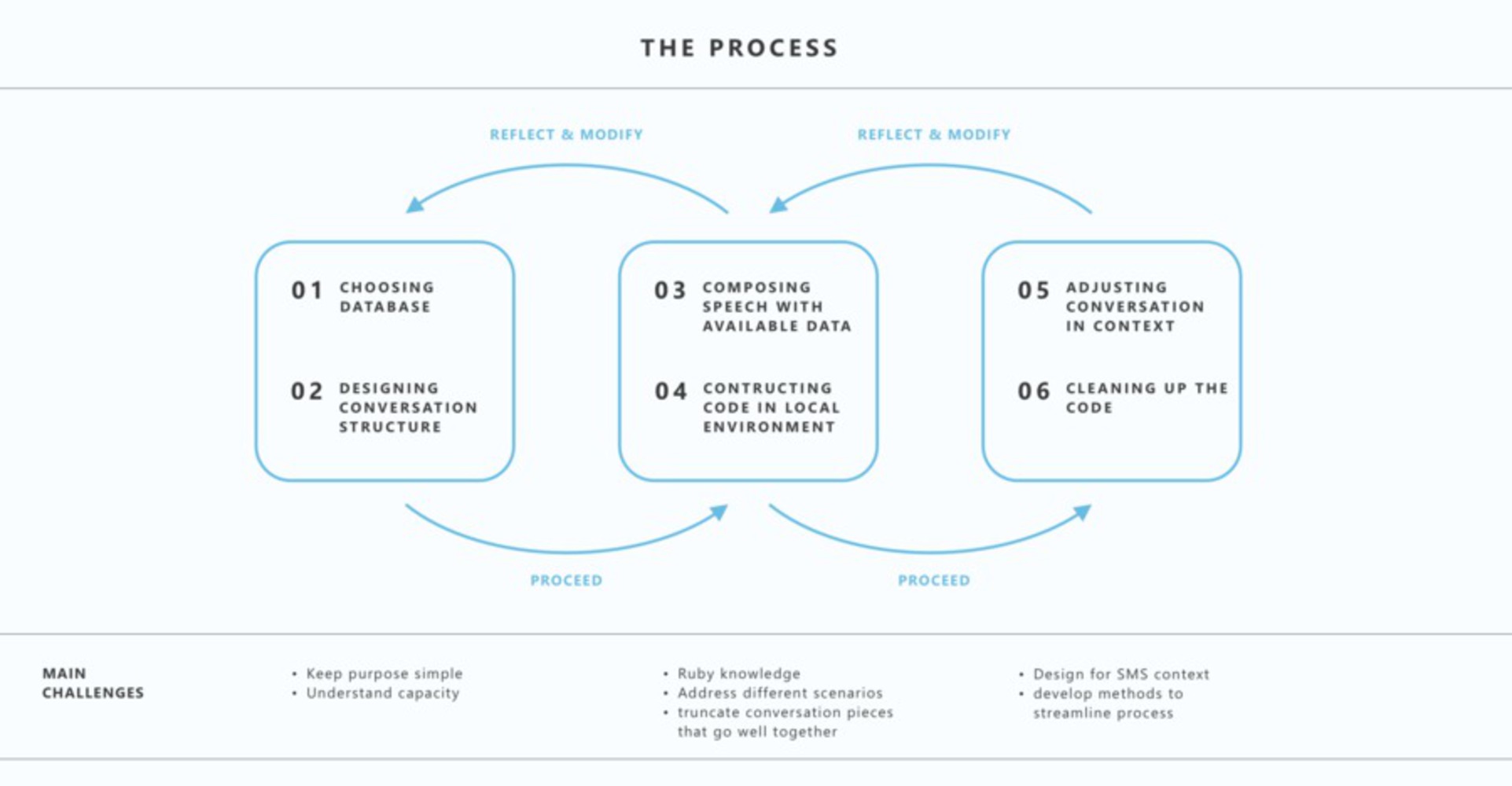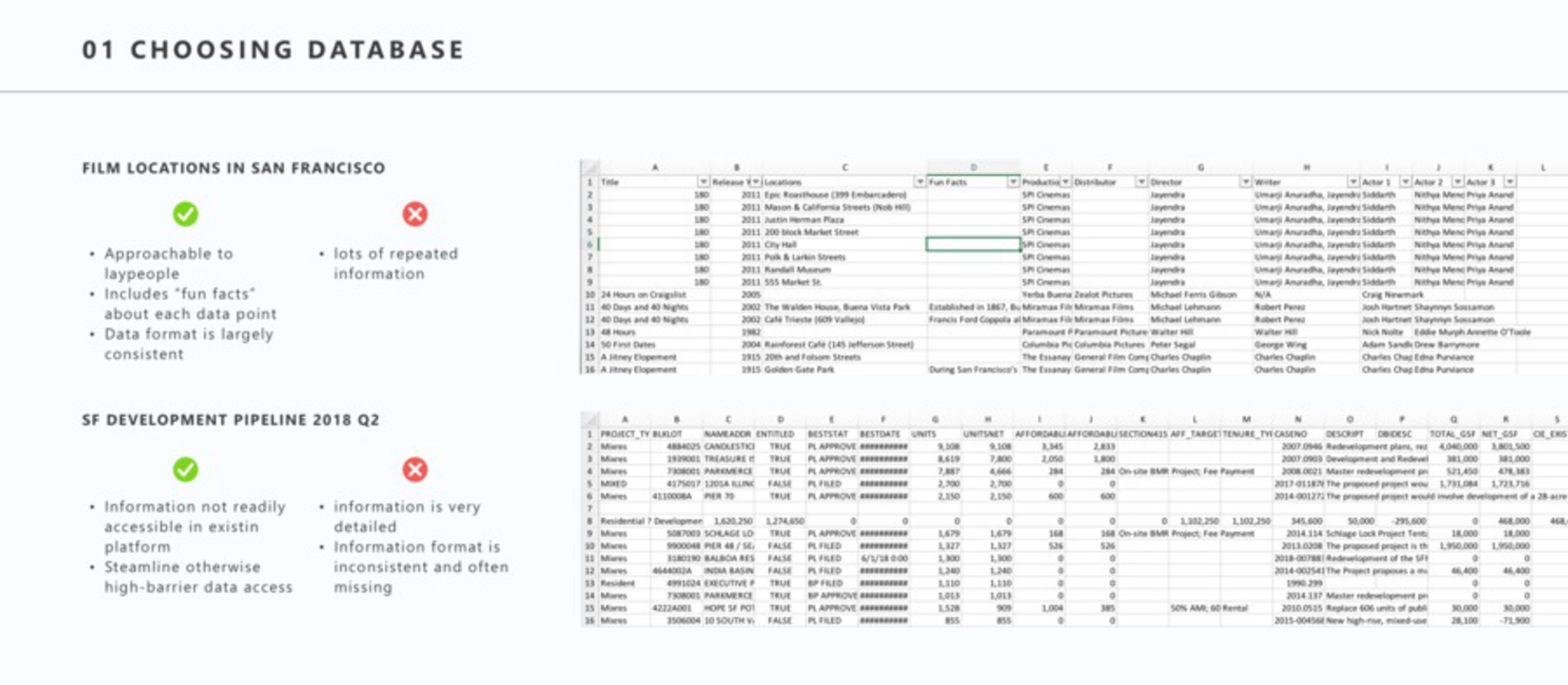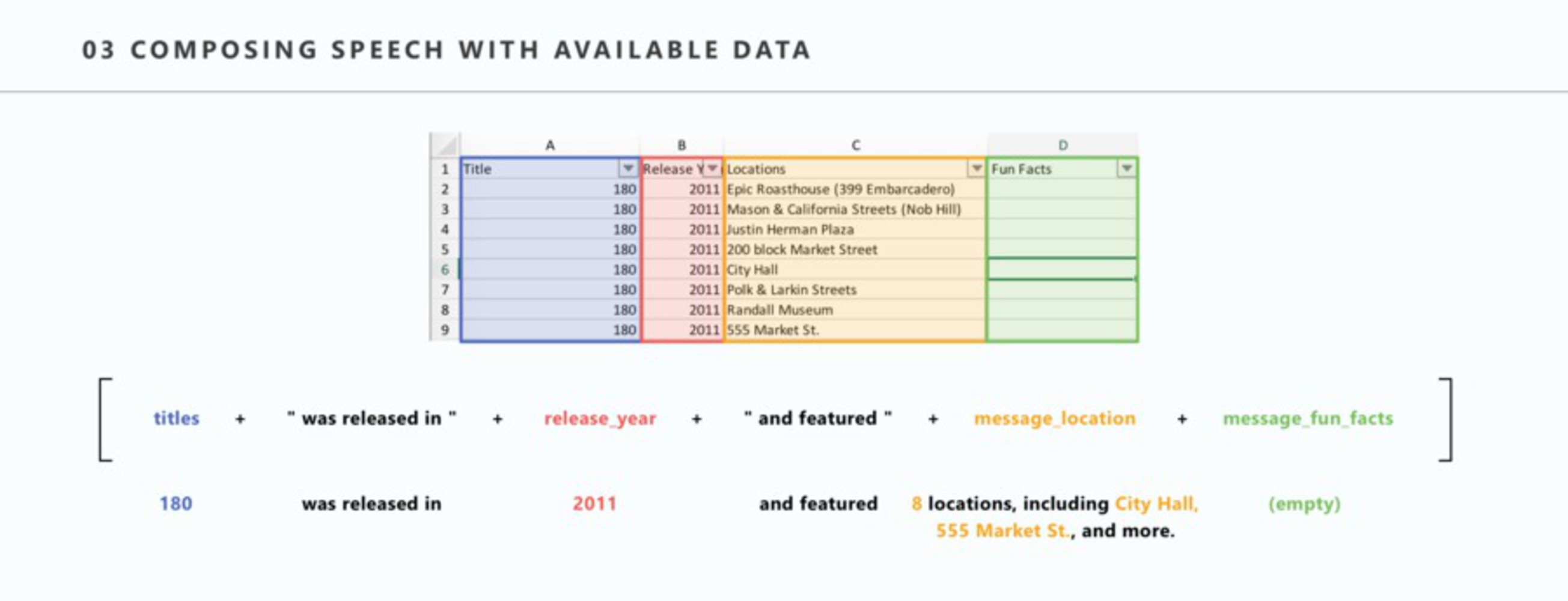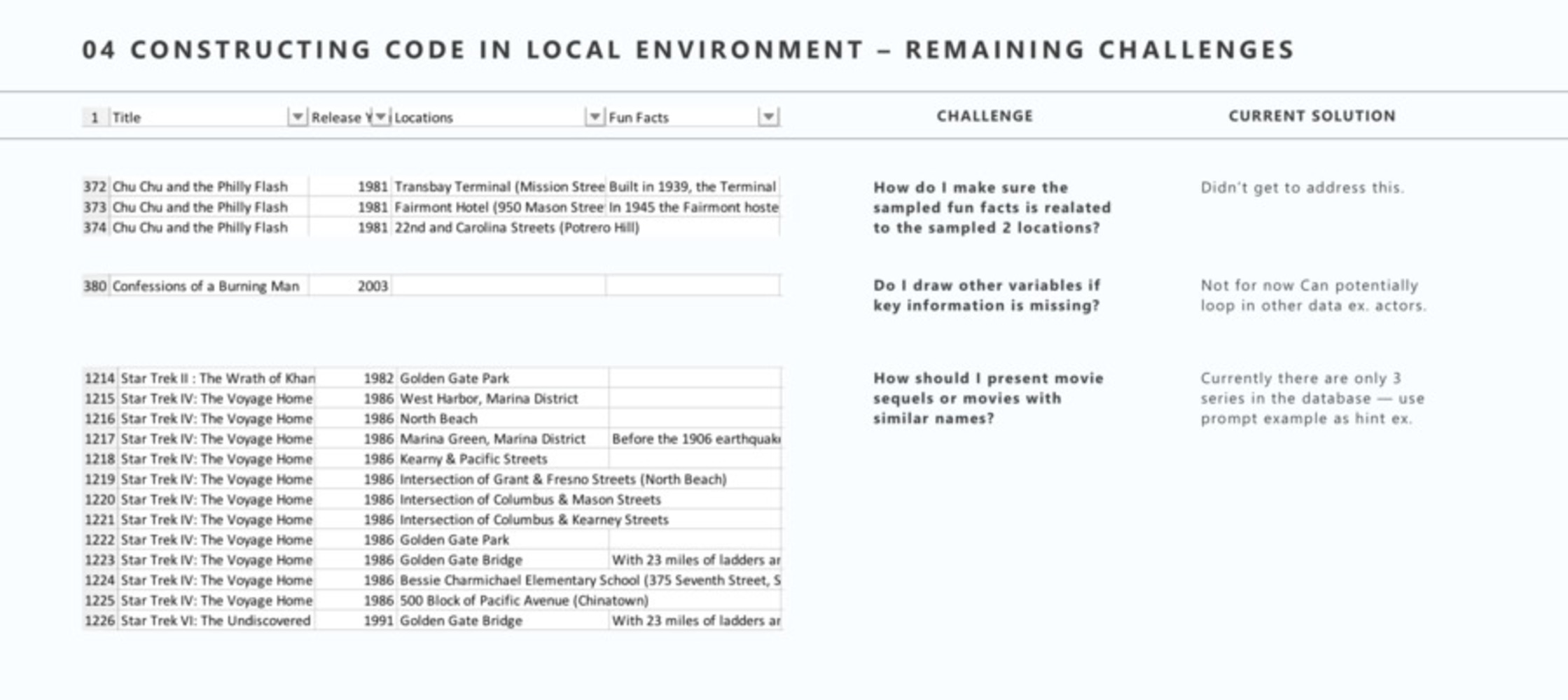Talk to the MeBot about a movie or TV show you like, and it can tell you if the film was filmed in San Francisco! Or ask the MeBot about the movies that I like :).
The MeBot is chat bot with which you can text to learn more about me and get movie fun facts about San Francisco – all by using San Francisco's open source API.
Previously practiced as a planner, this chat bot project is a fun marriage of my interest in civic engagement and interaction design. While this MeBot take on a more casual topic of city culture. It lays the ground work for more professional uses such as looking up ongoing development projects in cities or learning about the public space maintenance.
Youtube link to video (in case it doesn't show up below: https://youtu.be/wou1skeBnhQ)





